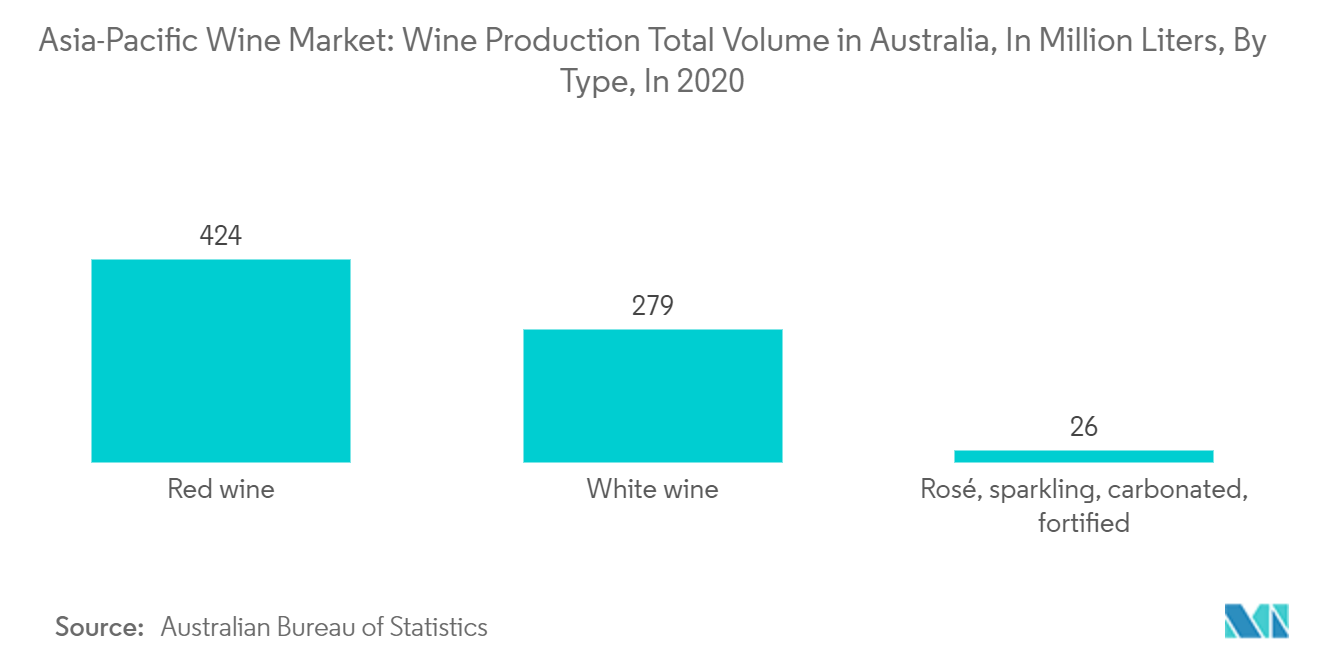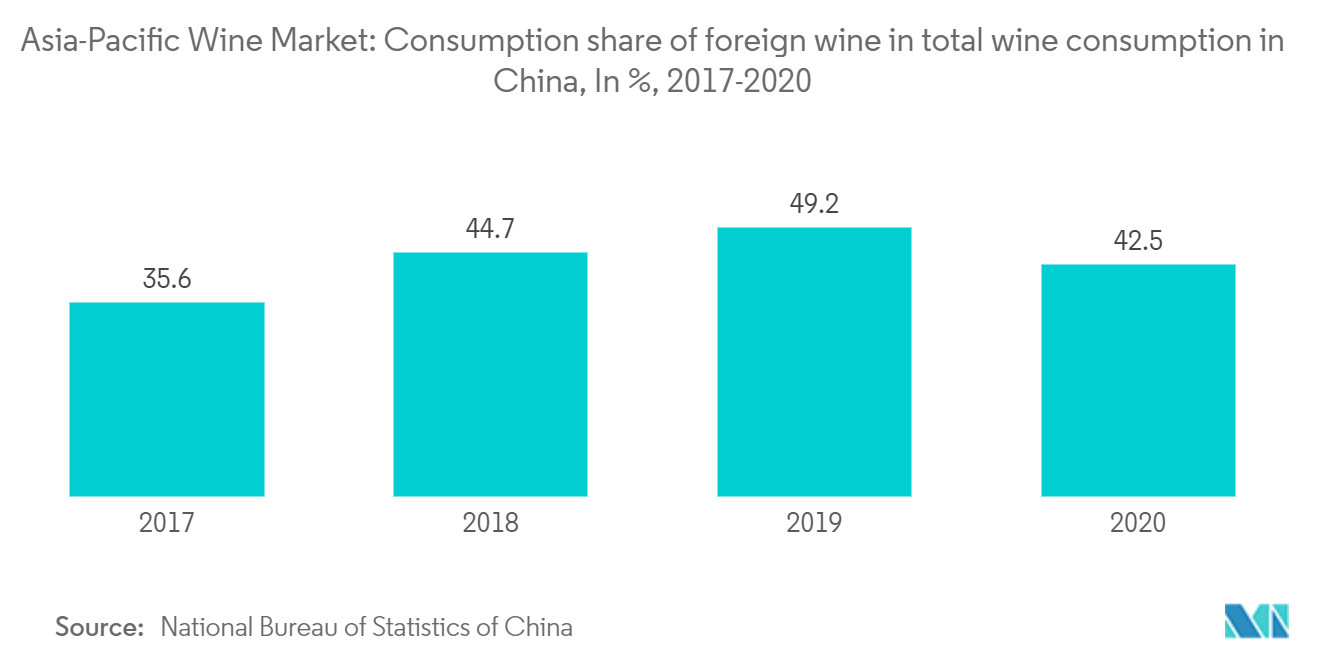Market Trends of Asia-Pacific Wine Industry
This section covers the major market trends shaping the APAC Wine Market according to our research experts:
Increase in the Frequency of Wine Consumption
The wine market is likely to be driven by the increasing frequency of wine consumption due to its health benefits and premiumization of wine products. Health-driven consumerism has been steadily increasing, and winemakers are adapting to the change. Red wine is typically preferred by Asian customers due to its alleged health advantages. Particularly Australia is popular for its red wine and the country has its production of fine red wine from the region's Shiraz grapes. Shiraz-based wines have numerous documented health advantages, such as reducing the incidence of cancer and preventing strokes which is adding to the growth of the wine market in the region. In countries such as Japan, Hong Kong, and South Korea, there has been an increase in the proportion of drinkers who drink wine at least once a week. According to Korea Agro-Fisheries & Food Trade Corp survey on the frequency of consuming Korean wine in South Korea in 2021, roughly a third drank Korean wine one to two times during the first six months of 2021 and around 22.4 percent stated that they drank it once a month.

China holds significant share in the region
China holds the largest market share in the Asia-Pacific region. The rapid urbanization and emerging nightlife culture in cities, an increasing proportion of Chinese consumers purchasing wine as a gift for acquaintances, and a greater willingness to try new varieties of alcohol are all driving the wine market in China. Imported wine is in high demand in China and the share of imported wine consumption is almost half of the total wine consumption. Moreover, community group buying has become common in China and it takes place in a physical, offline community where a single home or store manager acts as the primary hub for the distribution of products bought by the community's members. Companies are adopting this community group buying. For instance, Great Wall Wine, in March of 2020 has planned to recruit community partners to insert into its own retail sales network, thereby closing the loop with its customers and further refining and securing its operating network.


